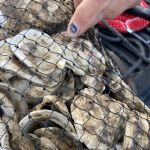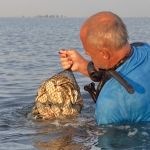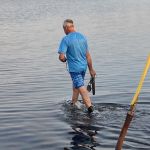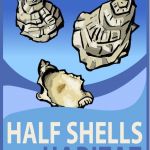Great South Bay Oyster Project
Photo Gallery
Recent Progress
Volunteer
Habitat Restoration

Habitat Restoration
We advocate for healing the creeks that feed our bay, for bay-friendly yards, for helping to return a shellfishing industry to the Great South Bay, and for the deployment of modern wastewater treatment technologies to address the problems caused by 500,000 cesspools and septic tanks, as well as the 197 large scale septic systems in malls, apartment complexes and locally.
Volunteer
Lend a hand! Join our Oyster Project Team and help revive The Great South Bay.
Partnering With Oyster Growers
Of course, nothing happens without cleaner water. That is why getting rid of our cesspools and septic tanks, healing our creeks, tackling runoff, and practicing natural lawn care is so important.
Please contact us with any suggestions you may have. You can also donate our efforts. We want to apply the latest techniques in aquaculture to revitalize our bay, our economy and our local culture.
We advocate for healing the creeks that feed our bay, for bay-friendly yards, for helping to return a shell fishing industry to the Great South Bay, and for the deployment of modern wastewater treatment technologies to address the problems caused by 500,000 cesspools and septic tanks, as well as the 197 large scale septic systems in malls, apartment complexes and locally.
Where You Can Get Fresh, Long Island Blue Point Oysters
- Neguntatogue Oysters (Lindenhurst) – call or text Keith & Nicole at 631-275-8046
- Blue Island Oysters (Sayville)- Call Chris at (631) 563-1330 for availability
- Maris Stella Oysters (Captree) – call or text Sixto at 516-939-5545
- Little A’s (Bay Shore) – call or text Michael at 917-526-1900
- Red Tiger (West Islip) – call or text Lou at 646-228-6273
The Making Of An Oyster Sanctuary
Site Evaluation
Establishing the Sanctuary
Enhancing and Measuring for Success
Recent Progress On Habitat Restoration
A Water Quality Crisis On Long Island — Brown Tide, Beach Closings; Baykeeper Brings Law Suits Against New York State and The Federal Government
With over 500,000 septic tanks on Long Island, we have a monumental water quality problem on our hands. With a further 180 local small scale sewage treatment plants on Long Island, the problem gets worse. With antiquated large scale treatment facilities further polluting our bays, chief among them The Bay Park Sewage Treatment Plant, crippled by Sandy and spewing millions upon millions of gallons of semi-treated sewage into the Western Bays, we have a disaster of monumental proportions on our hands, yet the issue is vastly under reported, and both the New York State Department of Environmental Conservation and the EPA are failing to address the issue, refusing, it seems, to enforce the laws already on the books, specifically The Clean Water Act.
In Praise of The Stony Brook Southampton Coastal and Estuarine Research Program (SCERP) — “Like” Them on Facebook If You Care About The Fate of The Great South Bay and Every Bay
Knowing now the task at hand, we have no choice but to take it on. To say this problem is too big is to say Long Island has no future. Without clean water, we have no bays, rivers, and ponds worth having. Without clean water, what do we drink, bathe in, or wash with? In the end, it is up to us to act responsibly on the conclusions of SCERP’s research. The very first step we can take in that is to make sure everyone on Long Island is familiar with their work and their conclusions. Tell your family, friends, neighbors, coworkers. We must move from knowledge to awareness to action if we are to preserve Long Island and its waters for future generations. Make no mistake – this problem will cost billions to fix. Eco friendly septic tanks and toilets would need to be deployed throughout Nassau and Suffolk. Sewage treatment plants would need to be modernized and rebuilt. With the total value of Long Island real estate easily in the hundreds of billions of dollars, one would think the infrastructure investment would be worth it.
The Breach Report July 11th — New Inlet Holding Off The Brown Tide, at Least In The Eastern Part of The Great South Bay (via SCERP)
The brown tide bloom in The Great South Bay is massive and its results will be devastating. The New Inlet will mitigate the damage somewhat — we should be happy it wasn’t closed after Sandy! — but the real problem continues to be the 500,000 septic tanks in Nassau and Suffolk. Scientists are now speculating that the Babylon area was hit hard by this brown tide because the flow of polluted groundwater running into the bay was greatest there. While some of Babylon is on sewers, much of Babylon isn’t. After an historically wet June — we had twice the rain we usually did — the ground water, now supersaturated, flowed towards the bay, drawing septic tank water with it. Babylon’s rivers and streams contribute 30% of the ground water pollution into the bay, as measured by nitrogen content, as it is. A month of flooding rains, predictably, exacerbated the problem.
The Great South Bay — Preserving a Legacy
The Great South Bay must be preserved for future generations.
The Breach Report July 8th, 2013 – Damaging Brown Tide Spreads Across Great South Bay, Cell Count Much Lower Near New Inlet – A Report From SCERP
DAMAGING BROWN TIDE SPREADS ACROSS GREAT SOUTH BAY
June rains kick starts event; Presence of The New Inlet keeps levels lower in Eastern Bay
Stony Brook, NY, July 8th 2013 – An intense and damaging brown tide has emerged across much of Great South Bay. Monitoring by The Gobler Laboratory of Stony Brook University has revealed that a brown tide developed in late June in western Great South Bay and has intensified and spread east since. Abundances of the brown tide organism were recorded at more than 1,000,000 cells per milliliter in western Great South Bay as of July 2nd in the region between the Robert Moses Bridge and Islip. Densities declined to less than 100,000 cells per milliliter within eastern Great South Bay. Densities above 100,000 cells per milliliter can be harmful to marine life. This marks the first summer brown tide in Great South Bay since 2008.
Save The Great South Bay — A Grassroots Movement
Save The Great South Bay, a non-profit organization founded in August 2012, , is a local grassroots organization dedicated to the revitalization of the bay.
We want future generations to fish, clam and swim in these waters as we had. We want to restore marine and shoreline habitats so that the South Shore and beach communities that ring the bay can become sustainable for this century.
At present, we are at a moment of crisis. The water quality on Long Island is such that due to septic tank seepage, pesticides, storm runoff, and lawn and agricultural fertilizer, we may not have water to drink, bathe in and cook with before long. As our polluted ground water seeps into our aquifer, it also seeps into our rivers, bays and ponds, and it is killing our bodies of water at an accelerating pace, and the costs of over-development and poor infrastructure mount.




















